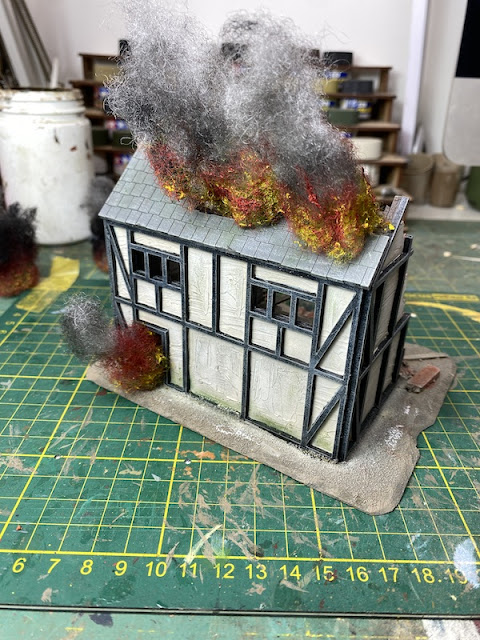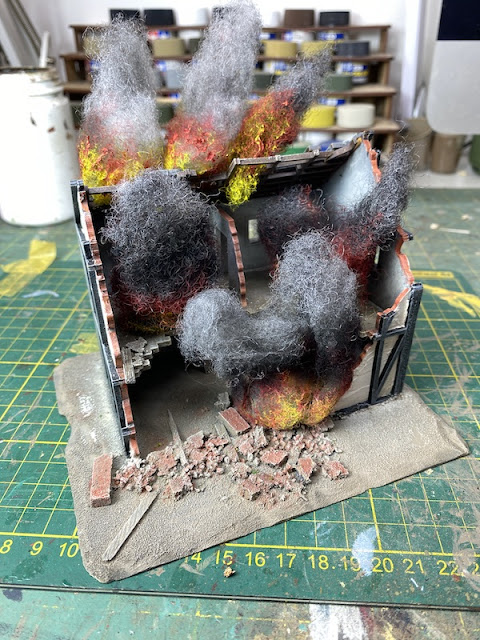Well, not literally of course. Although I should probably confess that as a child more than a few of my Airfix figures came to a grizzly end at the hands of matches or fireworks, but I'd like to think I'm a bit more grown up now. Yeah, yeah, I know what you're thinking..... still playing with toy soldiers at your age....yes, very funny.
A random event in a recent game of Chain of Command saw one of the buildings catch fire and over several of the following phases an increasing amount of smoke needed to be marked on the table. That proved a challenge. While I've made explosion markers for mortar barrages and knocked-out tanks I don't have anything that does a good job of showing burning terrain.
The explosion markers were made out of soft foam from an old mattress. Using that foam I made what is in effect clumping foliage, but instead of making shrubs or hedgerows I painted it black and shaped it into explosions.

The exact same technique was used for tanks that suffered a catastrophic internal explosion, it was simply a matter of painted them differently.
It can produce some very pleasing effects, so much so I was inspired to make a jet of flame for my man-pack flamethrower teams.
While these work well for their intended purpose they lack the flexibility I need for various game situations so I made up new markers using cushion stuffing. It's the same material I use for smoke rounds from mortars or grenades which comes in white and doesn't need any work to make it ready for use in a game.
For a fire the fibres needed painting which I did with acrylic craft paints. Starting with a bright yellow at the base and then working in a red over and around it. The smoke itself was given a light spray of black acrylic with an airbrush.
The fibres are very light but also quite spongy and they don't always want to go where you want them to be. To solve that I sculpted a piece of Milliput into a core central flame. The idea being that this would have enough weight to anchor down the cushion stuffing.
These were coated with PVA glue and inserted into the middle of a few of the pieces.
This gave them a low centre of gravity and a bit more weight so that they will stay where they are placed.
I didn't do this with all the pieces as I wanted to be able to stuff those into the windows of houses or the apertures of bunkers and for that they needed to be more pliable. They were painted in exactly the same way as the other flame pieces.
These were quick and simple but make for effective looking pieces, especially when grouped together to make a larger fire as you can see here.
If you've found this post useful and would like to Buy Me a Coffee to help cover some of the costs of running the blog you can click through at the link or on the tab in the right hand column of this page.















Very effective indeed Mark.
ReplyDeleteThis comment has been removed by the author.
ReplyDeleteAnother idea that needs stealing and making my own. Along with all the other things I want to do, but never seem to have enough time to start/work on/finish (delete as appropriate).
ReplyDeleteNice work - they look good!
ReplyDeleteVery realistic.
ReplyDelete